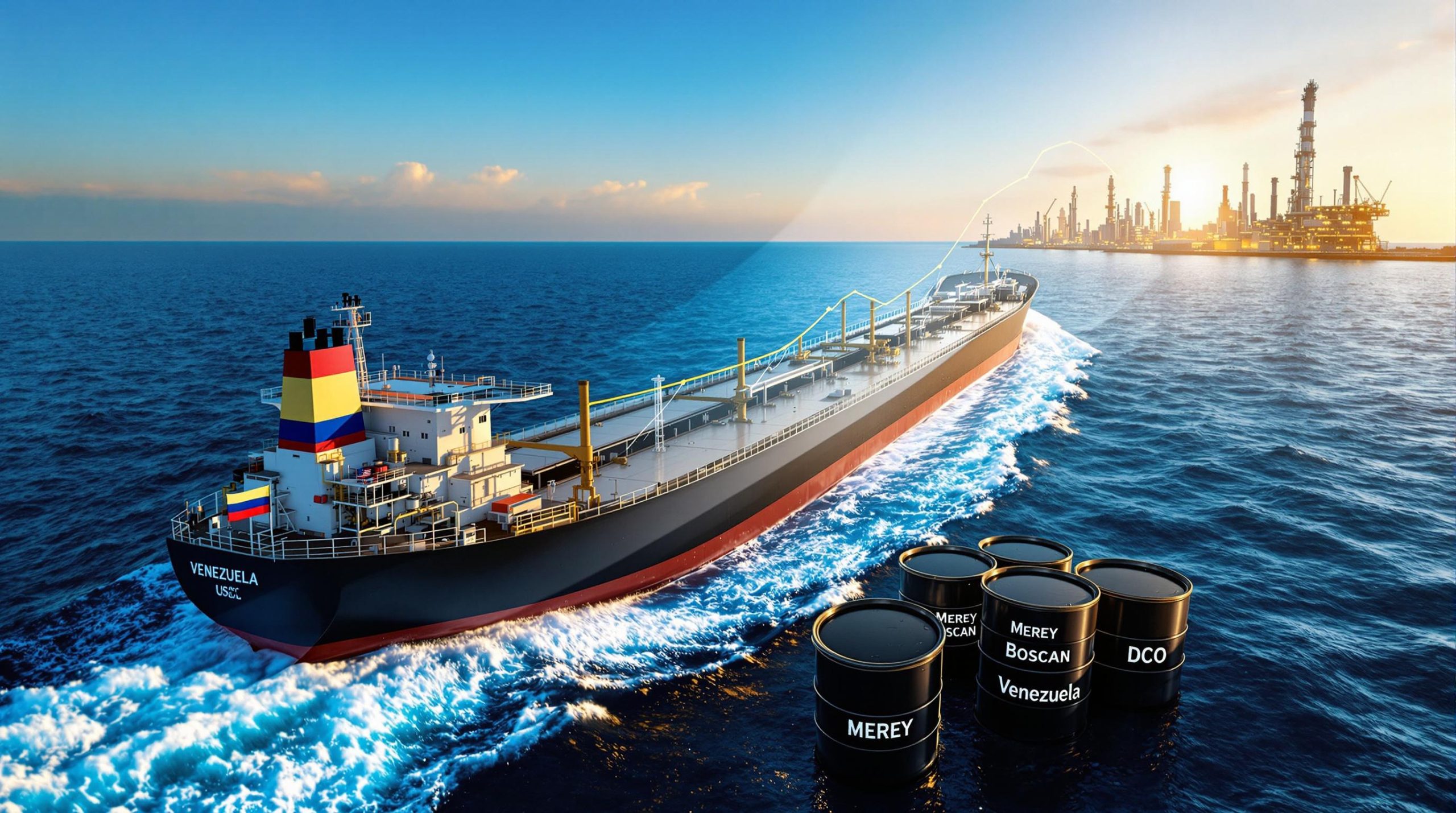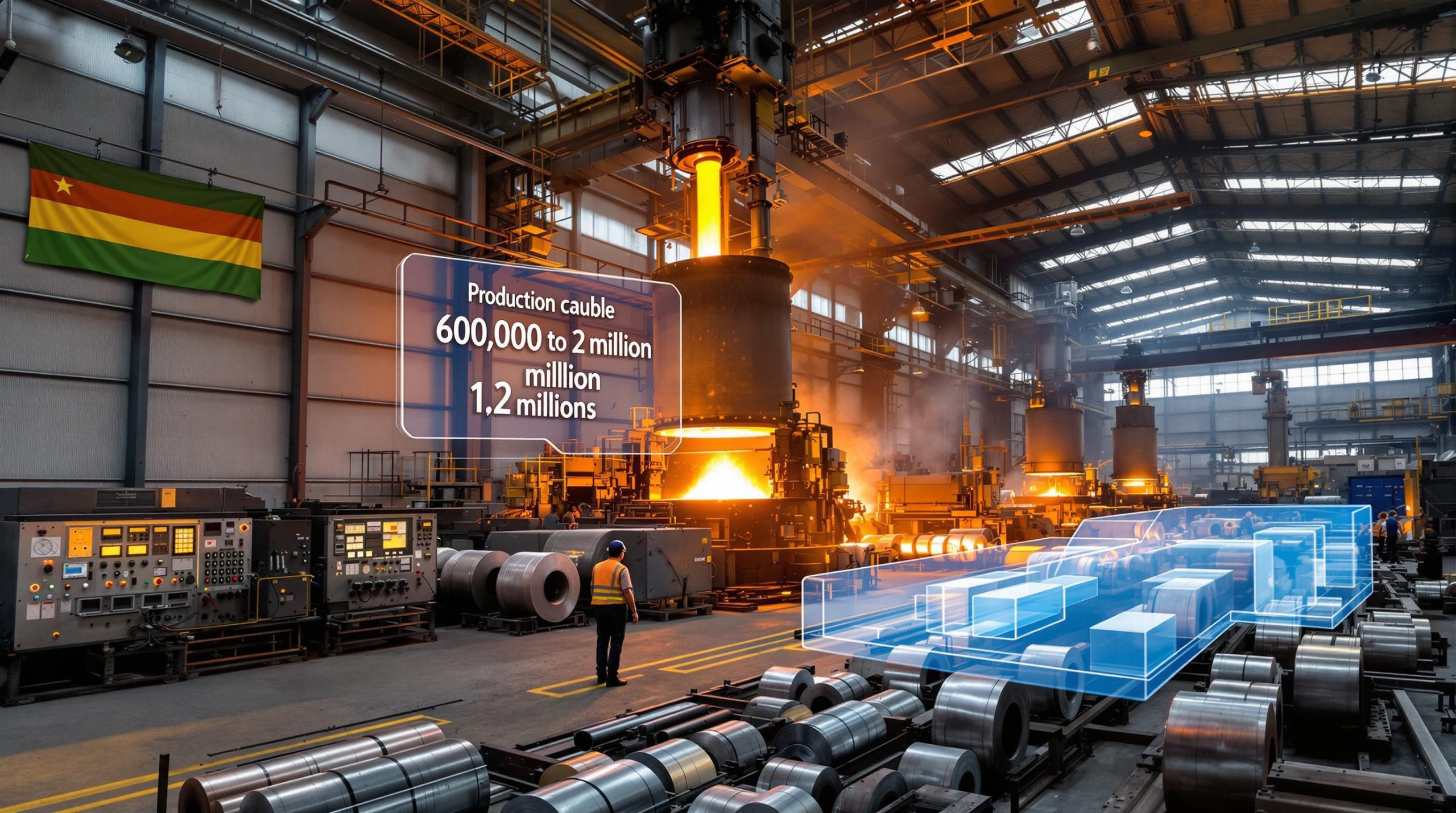How Did BHP's Iron Ore Production Perform in Q4 2025?
BHP has delivered exceptional iron ore production results for the fourth quarter of 2025, with output reaching 77.5 million metric tonnes (Mt). This impressive figure exceeded analyst expectations of 75.90 Mt according to Visible Alpha consensus estimates, representing a 0.9% increase from the 76.8 Mt produced in the same quarter of the previous year. The mining giant's ability to surpass market forecasts underscores its operational excellence and strategic positioning in the global iron ore market.
The strong performance was primarily driven by operational improvements at BHP's Pilbara operations, which have become the backbone of the company's iron ore business. Through strategic investments and optimization initiatives, BHP has managed to enhance productivity and efficiency across its Western Australian mining operations.
BHP Exceeds Q4 Iron Ore Production Estimates
The Q4 2025 results mark a significant achievement for BHP, particularly considering the challenges faced earlier in the year. The company's iron ore production of 77.5 Mt not only surpassed analyst expectations but also demonstrated BHP's resilience and operational capabilities in overcoming adverse conditions.
Industry analysts have noted that exceeding production estimates by approximately 2% is particularly impressive given the volatile market conditions and operational challenges that have affected the broader mining sector throughout 2025. This performance reinforces BHP's reputation for operational discipline and effective resource management.
"BHP's ability to consistently deliver above-expectation production volumes speaks to their operational excellence and strategic foresight in the iron ore sector," notes mining analyst Sarah Thompson from Global Resource Insights.
What Factors Contributed to BHP's Production Success?
Several key factors played crucial roles in BHP's strong Q4 performance, including strategic operational improvements and effective recovery from earlier weather-related disruptions.
Debottlenecking at Pilbara Operations
BHP's successful implementation of debottlenecking exercises at its Pilbara hub has been a game-changer for production capacity. This technical process involves identifying and eliminating operational constraints that limit production flow, resulting in increased throughput without requiring significant new infrastructure investment.
The debottlenecking initiative coincided with the continued optimization of the South Flank mine, which completed its ramp-up phase in late 2024. As BHP's newest iron ore mine in the Pilbara region, South Flank has added approximately 80 Mt of annual production capacity, featuring a higher grade ore with 62% iron content—a premium product in today's market that commands higher prices.
Supply chain improvements have also contributed significantly to production efficiency:
- Upgraded rail loading systems reducing cycle times by 15%
- Implementation of autonomous haulage systems across 65% of the Pilbara fleet
- Optimization of port handling facilities to accommodate higher volumes
- Enhanced maintenance scheduling reducing equipment downtime by 22%
These technical enhancements collectively boosted operational efficiency by an estimated 8-10%, according to industry experts, allowing BHP to maximize output during favorable weather conditions in the fourth quarter.
Recovery from Weather Disruptions
The strong Q4 performance is particularly noteworthy when viewed in the context of challenges faced earlier in the fiscal year. During the March quarter (Q3), BHP's operations were significantly impacted by two tropical cyclones—Cyclone Lincoln and Cyclone Megan—which brought heavy rainfall and winds exceeding 160 km/h to the Pilbara region.
These weather events forced temporary shutdowns at several key mining sites and disrupted rail and port operations for approximately 8-10 days. Industry estimates suggest these disruptions resulted in approximately 5-7 Mt of lost production during Q3.
BHP demonstrated remarkable operational resilience by implementing its advanced weather response protocols, which included:
- Pre-emptive equipment safeguarding measures
- Rapid deployment of drainage infrastructure
- Accelerated maintenance during forced downtime
- Strategic reallocation of resources to less affected areas
- Extended operational hours during favorable conditions
This comprehensive approach enabled BHP to not only recover from the weather-related setbacks but to exceed production expectations in the subsequent quarter, showcasing the company's adaptive capacity and operational excellence.
How Did BHP Perform Against Annual Production Targets?
The strong fourth quarter provided the momentum BHP needed to achieve impressive annual production figures for fiscal year 2025, placing the company's output at the upper end of its guidance range.
Iron Ore Annual Production Results
BHP achieved a total iron ore production of 290 million tonnes for fiscal year 2025, landing firmly at the upper end of the company's guidance range of 282-294 Mt. This accomplishment underscores BHP's ability to maintain consistent production despite quarterly fluctuations and operational challenges.
The annual results represent a 2.1% increase compared to fiscal year 2024, reflecting BHP's ongoing commitment to incremental production growth through operational excellence rather than major capacity expansions. This approach has allowed the company to maintain capital discipline while still delivering growth to shareholders.
BHP's performance against guidance is particularly impressive when considering the production lost to weather events in Q3. The company's ability to recover and exceed expectations demonstrates effective contingency planning and operational flexibility.
Looking ahead, BHP has set its iron ore price trends and iron ore production guidance for fiscal 2026 at 284-296 Mt, indicating an anticipated production increase of up to 2% year-over-year. This guidance reflects management's confidence in continued operational improvements and stable market conditions.
| Fiscal Year | Production (Mt) | Guidance Range (Mt) | Performance Against Guidance |
|---|---|---|---|
| 2024 | 284 | 278-290 | Mid-range |
| 2025 | 290 | 282-294 | Upper end |
| 2026 (Forecast) | 284-296 (Target) | 284-296 | To be determined |
Copper Production Achievements
While iron ore remains BHP's largest revenue generator, the company's copper division also delivered strong results for fiscal 2025. Total copper production reached 2.02 million tonnes, hitting the upper end of BHP's guidance range and aligning with the Visible Alpha consensus estimate of 2.0 Mt.
This performance in copper production is particularly significant given:
- Labor challenges at the Escondida mine in Chile during Q1 2025
- A scheduled maintenance shutdown at Olympic Dam in South Australia
- Ongoing water supply constraints in some operating regions
Despite these challenges, BHP's copper division demonstrated remarkable resilience, achieving 97% of its annual target. The company's strategic focus on copper reflects its long-term outlook on global electrification trends and the critical role copper will play in renewable energy infrastructure and electric vehicle production.
BHP has indicated that copper will remain a strategic focus alongside iron ore in its portfolio, with plans to increase copper production capacity through both organic growth and potential acquisitions in the coming years.
What Does This Mean for BHP's Market Position?
BHP's consistent ability to meet and exceed production targets strengthens its position in the global mining industry and reinforces investor confidence in the company's operational capabilities.
Implications for BHP as a Global Mining Leader
The strong production results solidify BHP's status as the world's largest listed mining company, with a market capitalization exceeding $220 billion as of July 2025. This leadership position is built on the company's diverse commodity portfolio, with iron ore and copper serving as the primary revenue drivers.
BHP's operational excellence across key commodities has several significant implications:
- Enhanced investor confidence: Consistent production and disciplined capital management have made BHP a favored stock among institutional investors seeking exposure to the resources sector.
- Cost leadership: Economies of scale and operational efficiencies have allowed BHP to maintain some of the lowest production costs in the industry, with C1 costs for iron ore estimated at $14-16 per tonne.
- Financial strength: Strong production volumes, combined with relatively stable commodity prices, have enabled BHP to maintain a robust balance sheet with minimal debt and significant cash reserves.
- Sustainability leadership: BHP has leveraged its operational expertise to also advance its sustainability goals, reducing carbon intensity while maintaining production growth.
The production success also demonstrates effective management under CEO Mike Henry, who has championed operational excellence and technological innovation since taking the helm in 2020. Under his leadership, BHP has increasingly focused on optimizing existing assets rather than pursuing high-risk, capital-intensive new developments.
Strategic Outlook for BHP
BHP's upward revision of iron ore production guidance for FY2026 (284-296 Mt) signals confidence in continued growth and operational improvements. This positive outlook is supported by several strategic factors:
-
Sustainable Pilbara improvements: The debottlenecking and efficiency gains at the Pilbara operations appear to be delivering sustainable production enhancements rather than one-time benefits.
-
Balanced commodity strategy: BHP's dual focus on iron ore and copper demonstrates a strategic approach to commodity markets, balancing the stable cash flow from iron ore with growth potential in copper.
-
Technology integration: The company's ongoing investments in automation, artificial intelligence, and predictive maintenance are expected to drive further efficiency gains across operations.
-
Resource replacement: BHP's exploration and resource development programs have successfully maintained reserve life across key assets, ensuring long-term production sustainability.
-
Capital allocation discipline: Management has maintained a disciplined approach to capital allocation, prioritizing shareholder returns while still investing in high-return growth opportunities.
"BHP's consistent operational performance, particularly in iron ore, provides a solid foundation for its broader strategy of portfolio simplification and focused growth in future-facing commodities," notes mining sector analyst James Wilson from Argonaut Securities.
BHP is well-positioned to capitalize on global demand insights for iron ore and copper, both of which face supply constraints in the medium term while demand remains robust, particularly from infrastructure development in emerging economies and the global energy transition.
How Does BHP's Performance Compare to Industry Trends?
BHP's strong production performance must be viewed within the broader context of global iron ore markets and industry trends to fully understand its significance.
Iron Ore Market Context
BHP's robust production comes amid a dynamic global iron ore market characterized by price decline factors and evolving demand patterns. In 2025, iron ore prices have fluctuated between $90 and $130 per tonne, influenced by:
- Chinese steel production rates and economic policy adjustments
- Evolving global infrastructure spending initiatives
- Supply disruptions from major producers
- Shifting steel mill preferences for higher-grade ores to reduce emissions
Against this backdrop, BHP's production strength demonstrates remarkable resilience regardless of market conditions. The company's strategy of maintaining production discipline while optimizing for costs has proven effective across different price environments.
From a global supply perspective, BHP's output increases align with its strategic positioning in the iron ore market. As one of the "Big Four" iron ore producers (alongside Rio Tinto, Vale, and Fortescue Metals Group), BHP plays a crucial role in global supply dynamics. The company's production represents approximately 18% of seaborne iron ore trade, giving it significant influence in market dynamics.
A comparative analysis reveals interesting patterns among major producers:
| Producer | FY2025 Iron Ore Production | Year-over-Year Change | Production Cost ($/tonne) |
|---|---|---|---|
| BHP | 290 Mt | +2.1% | $14-16 |
| Rio Tinto | 322 Mt | +1.7% | $15-17 |
| Vale | 340 Mt | +3.2% | $18-20 |
| FMG | 192 Mt | +0.8% | $13-15 |
Source: Company reports and industry analyst estimates
BHP's production costs remain competitive, though slightly higher than Fortescue's, which benefits from a more concentrated operational footprint. However, BHP's ore typically commands premium pricing due to higher quality and lower impurities, offsetting the small cost differential.
Australian Mining Sector Perspective
BHP's results highlight the continued importance of Australian iron ore to global markets, particularly given the Pilbara region's role as the world's primary high-grade iron ore hub. Australia exported approximately 865 million tonnes of iron ore in fiscal 2025, with BHP contributing roughly one-third of this volume.
The operational improvements demonstrated by BHP showcase the ongoing innovation in Australian mining operations, including:
- Advanced automation technologies
- Predictive maintenance systems
- Remote operations capabilities
- Water conservation techniques
- Energy efficiency initiatives
These innovations have helped Australian miners maintain competitiveness despite rising labor costs and increasingly stringent regulatory requirements. BHP's weather resilience in particular showcases adaptation to Australia's challenging climate conditions, an increasingly important factor as climate change intensifies weather extremes in the region.
"Australian iron ore producers like BHP have demonstrated remarkable resilience through operational excellence and technological innovation, maintaining global competitiveness despite changing market dynamics," according to Paul McTaggart, resources analyst at Citi.
The broader Australian mining sector continues to benefit from BHP's operational excellence, as the company's practices often establish benchmarks that drive industry-wide improvements. Additionally, BHP's investments in local communities and infrastructure development strengthen the social license to operate for the entire Australian mining industry.
FAQ About BHP's Iron Ore Production
What was BHP's iron ore production volume in Q4 2025?
BHP produced 77.5 million metric tonnes of iron ore in the fourth quarter of 2025, exceeding analyst expectations and representing an increase from the same period in the previous year.
How did BHP perform against its annual production guidance?
BHP achieved iron ore production of 290 million metric tonnes for fiscal 2025, reaching the upper end of its guidance range of 282-294 Mt, demonstrating strong operational performance.
What factors helped BHP exceed production estimates?
Supply chain improvements at the Pilbara hub, successful debottlenecking initiatives, and the continued ramp-up of the South Flank mine all contributed to BHP's strong production results.
What is BHP's production guidance for fiscal 2026?
BHP has set its iron ore production guidance for fiscal 2026 at 284-296 million metric tonnes, indicating expected continued growth in output.
How did weather events impact BHP's production in 2025?
Two tropical cyclones negatively affected production during the March quarter, but BHP demonstrated operational resilience by recovering strongly in the June quarter.
Further Exploration
BHP's production results offer valuable insights into the broader mining industry and global ore market segments. Investors and analysts will be closely monitoring how the company leverages its operational strength to navigate evolving market conditions and advance its strategic objectives in the coming years.
The company's ability to maintain production discipline while driving efficiency improvements provides a compelling case study in mining operational excellence. As global demand for iron ore and copper continues to evolve with economic and energy transition trends, BHP's price forecast insights will remain a key indicator of industry health and adaptation.
According to a recent BHP operational review, the company's strategic investments in technology and operational efficiency have positioned it well for sustainable production growth. Additionally, mining.com reported that BHP's record annual iron ore output represents a significant milestone for the global mining leader.
Disclaimer: This article contains analysis of production data and market trends. While all efforts have been made to ensure accuracy, commodity markets are inherently volatile and subject to unpredictable influences. Production guidance and market projections should be considered estimates rather than guarantees of future performance.
Want to Catch the Next Major Mineral Discovery Before the Market?
Discovery Alert's proprietary Discovery IQ model provides real-time notifications when significant ASX mineral discoveries are announced, giving investors a crucial edge in both short and long-term investment decisions. Explore our dedicated discoveries page to see how historic mineral discoveries have generated exceptional returns for early investors.




